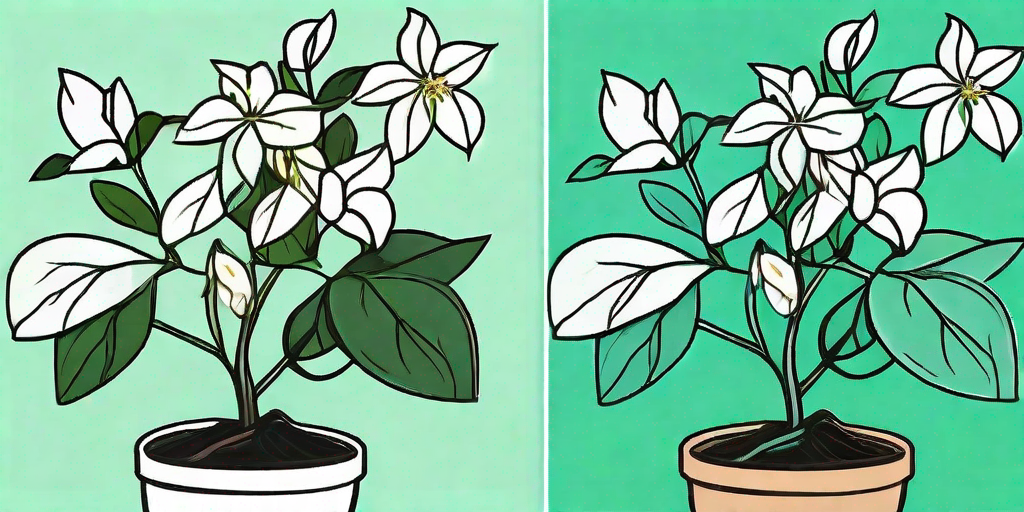
So, your jasmine plant is looking a little worse for wear, huh? Fear not, dear gardener, for we have the perfect remedy for your green-thumbed woes. This comprehensive guide will take you through the process of reviving your jasmine plant, step-by-step, and with a dash of humor to keep things light. After all, gardening should be fun, shouldn't it?
Understanding Your Jasmine Plant
Before we dive into the nitty-gritty of plant revival, it's important to understand what makes your jasmine tick. Jasmine plants are like the divas of the plant world. They need just the right amount of light, water, and attention. Too much or too little of any of these, and they'll let you know about it!
Native to tropical and subtropical regions, jasmine plants are accustomed to a warm, humid environment. They thrive in well-drained soil and require plenty of sunlight. However, they can also tolerate partial shade. Now that we've covered the basics, let's move on to the revival process.
Step-by-Step Guide to Reviving Your Jasmine
Step 1: Assess the Damage
The first step in reviving your jasmine plant is to assess the damage. Are the leaves turning yellow? Is the plant wilting or looking droopy? These are signs that your plant is in distress. But don't panic! With a little TLC, your jasmine can bounce back.
Take a close look at your plant. If the leaves are yellow, it could be a sign of overwatering. If the plant is wilting, it might not be getting enough water. Once you've identified the problem, you can take the appropriate steps to fix it.
Step 2: Adjust Watering
Watering is a critical aspect of plant care, and it's often where most people go wrong. Jasmine plants prefer their soil to be moist, but not waterlogged. If you've been overwatering your plant, cut back on the water. If you've been underwatering, increase the amount of water you give your plant.
Remember, it's better to underwater than overwater. If you're unsure, stick your finger into the soil. If it's dry an inch below the surface, it's time to water your plant.
Step 3: Check the Light
Jasmine plants love sunlight. If your plant isn't getting enough light, it might start to look a little sad. Try moving your plant to a sunnier spot. If you're growing your jasmine indoors, place it near a south-facing window for maximum sunlight exposure.
But be careful not to scorch your plant! While jasmine loves sunlight, it doesn't appreciate being cooked. If the leaves start to look burnt, move your plant to a spot with indirect sunlight.
FAQs
How often should I water my jasmine plant?
As a general rule, water your jasmine plant once a week. However, this can vary depending on the climate and the time of year. In hot, dry weather, you might need to water your plant more often. In cooler, wetter weather, you can cut back on the watering.
Remember, it's better to underwater than overwater. If you're unsure, stick your finger into the soil. If it's dry an inch below the surface, it's time to water your plant.
Can I grow jasmine indoors?
Absolutely! Jasmine plants can thrive indoors, provided they get enough sunlight. Place your plant near a south-facing window for maximum sunlight exposure. If you don't have a south-facing window, a bright, east or west-facing window will also do.
Keep in mind that indoor jasmine plants may need to be watered more frequently than outdoor plants, as indoor air can be quite dry.
Additional Tips for Jasmine Care
Pruning
Pruning is an essential part of jasmine care. It helps to maintain the shape of the plant and encourages new growth. Prune your jasmine plant in the spring, after it has finished blooming. Use sharp, clean shears to cut back the plant by about one-third.
Remember, pruning is not a punishment! It's like giving your plant a haircut. It might look a little bare at first, but it will soon fill out with fresh, new growth.
Fertilizing
Jasmine plants benefit from regular fertilizing. Use a balanced, water-soluble fertilizer and apply it according to the package instructions. Fertilize your plant in the spring and summer, when it's actively growing.
But be careful not to overdo it! Too much fertilizer can harm your plant. When in doubt, less is more.
Conclusion
Reviving a jasmine plant might seem like a daunting task, but with a little knowledge and patience, you can bring your plant back to life. Remember, plants are living things and they need care and attention just like we do. So, roll up your sleeves, put on your gardening gloves, and get to work. Your jasmine plant will thank you for it!















